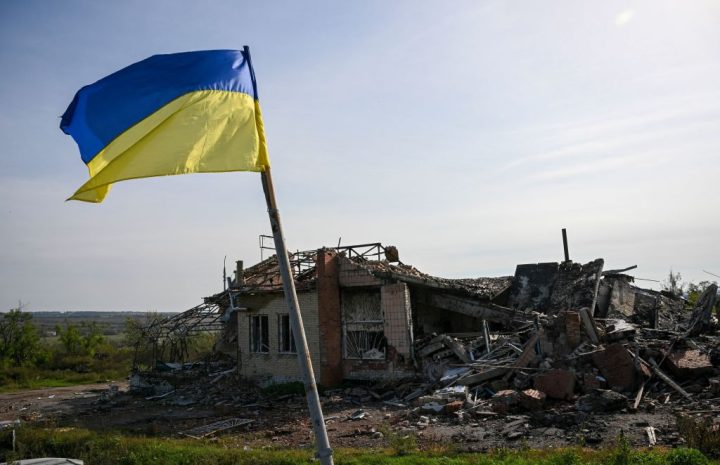America’s ATACMS long-range missiles were a potential ‘game changer’ to the war in Ukraine to some, a potential source of escalation to others. Now, with no real sense that either has proved true following Zelensky’s confirmation this week they were used for the first time, what does that tell us?
The MGM-140 Army Tactical Missile System (ATACMS) undoubtedly offers Kyiv new capabilities. It can deliver a 500-pound warhead or hundreds of cluster bomblets very accurately to a range of up to 190 miles. Unlike the Anglo-French Storm Shadows already in use, the two-ton missile is fired from a tracked HIMARS launcher rather than an aircraft and thus can respond very quickly to strike even mobile targets.
If the game is going to be changed, it will not be by any specific wunderwaffe
These missile systems were first used on 17 October, when as many as 18 may have been launched at Berdyansk and Lugansk air bases in Russian-occupied territory, destroying or damaging nine attack helicopters and an ammunition store. This was a significant blow, as Russia’s helicopter gunships have been very effective. They will now have to put more effort into building hardened shelters or else have to base them further away from the front line.
However, this is not the fabled ‘game changing moment’ in this war. As is, most of the ATACMS appear to have been intercepted, decoyed or otherwise not hit the target: only three definitely got through. In practice, although the Russians have proven surprisingly poor at pre-emptive preparation – knowing that Ukraine was likely to be receiving these missiles, optimised for hitting airfields, why were they still parking helicopters out in the open? – they have demonstrated a rough and ready capacity to adapt to each new capability Kyiv acquires, from long-range missiles to naval drones.
To the boosters, it is because the limited number of ATACMS provided so far are apparently of the older M39 version with cluster bombs rather than single warheads and a range of just 100 miles. To be sure, the longer-range variant would further disrupt Russian operations, bringing more targets within range, but no individual weapon is in itself going to be a war-winner.
Once, it was HIMARS launch systems albeit with shorter-range GMLRS rockets that were heralded as the ‘game changers’. They certainly forced the Russians to disperse and pull back their ammunition dumps and command centres, increasing the difficulty of maintaining their operations, but not making them by any means impossible. Then, it was modern Western tanks that would carve through Russian defences. While they have indeed given the Ukrainians greater protected mobility and firepower, a combination of anti-tank missiles and thickly-sewn minefields have so far limited their impact. Since then, it has been longer-range missiles like the Storm Shadow and ATACMS, and next F-16 fighters. All of them matter – but none of them are decisive.
By the same token, though, time and again weapons whose provision to the Ukrainians were deemed to be escalatory have proved nothing of the sort, and Russia’s ‘red lines’ have turned out to be no more than a very pale pink. Beyond the prospect of Western-supplied weapons being used against the Russian mainland, which also remains a taboo amongst Kyiv’s backers, there does not seem to be any conventional system that really would trigger a serious response from the Kremlin.
After all, its escalatory options are all in their own ways as dangerous to the Russian regime as Ukraine, from launching covert operations in Europe against weapons deliveries (which would likely trigger a more forceful Nato response) to a new mobilisation wave (which would be vastly unpopular at home). The much-feared tactical nuclear option, which was never really more than a propaganda weapon, is not even being discussed much, not least since China’s Xi Jinping read Putin the riot act earlier this year.
If the game is going to be changed, it will not be by any specific wunderwaffe but rather on the battlefield and in the leaderships of those countries at war. The Ukrainian counter-offensive has had its very real successes, measured less by movement on the ground as damage to Russian capabilities. However, it clearly has not made as much progress as Kyiv and its backers hoped. Although it is still possible that it can bring the crucial road and rail supply lines to Crimea under fire control – within range of its artillery – before autumn rains and sheer exhaustion bring the current operation to a halt, it is looking less and less likely. The Russians built a formidable defensive line and have proven more determined and adaptable than anticipated.
The Russians are launching their own attack on the contested (and increasingly devastated) eastern town of Avdiivka, both to keep enemy guns away from the city of Donetsk and also to draw away reserves from Kyiv’s main thrust to the south. But they are unlikely to have the capacity to launch any larger-scale offensive operations. Instead, the expectation is soon that there will be a lull as Ukrainian forces regroup and the Russians retrench, ready for a resumption of the fighting in spring.
Meanwhile, there will be more ATACMS strikes, and more calls for the next big thing, whether F-16s or something else. The key lesson, though, is not only that this is an industrial war in which mass – of men, but also of ammunition and other consumables – matters, but also that we cannot expect any individual stratagem, initiative or weapon to win the war on its own, let alone quickly. This has been, and will continue to be, a long, hard and bloody slog, and we have to accept that.







Comments